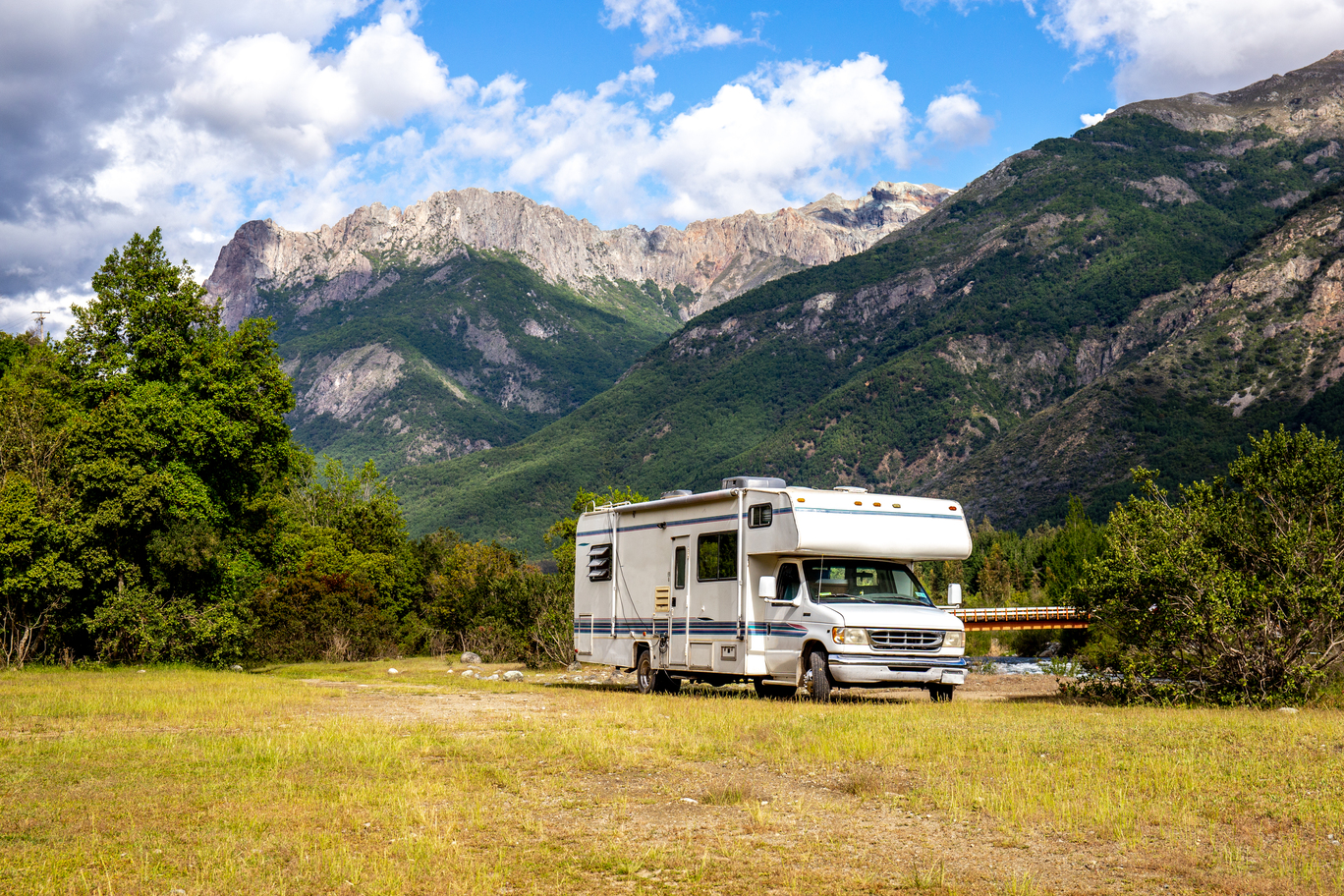Owning an RV is on the bucket list of many Americans. If you’re reading this, you may already own one (lucky you!). Whether you live in your RV or travel seasonally, and especially if you are thinking of upgrading your RV life with a new rig, you may want to review the pros and cons of different classes of RVs. Let’s introduce you to the main types of recreational vehicles.
First, the entire group of recreational vehicle fall into two catgories: motorhomes and towable rigs. Motorhomes can be driven, like buses, and are constructed in different sizes and with different features and mobility. Towables require a pulling vehicle and range from fifth-wheels to toy haulers (trailers) for ATVs, motorcycles, or even a small car. We are not talking about the towables today.
Motorhomes come in three classes. Most include an open-front cabin for the driver. Bus conversions are essentially Class A rigs, whether you purchase them already converted or do it yourself.
Class A
Self-powered, these are the largest and most luxurious of RVs. And the most expensive. Some companies have even built units costing more than a million dollars for special customers. Class A RVs start around $95,000 and go as high as you can afford. They are built on converted truck or bus chassis and can have either diesel or gas engines plus, of course, power steering and brakes and automatic transmissions. A special endorsement on your driver’s license is also necessary for driving a Class A rig.
Larger means more storage, more living space, and more robust hauling capacities (and more room for your family and four-legged friends). And often upscaled interior features, fabrics, built-in appliances and, well, just about anything a nice condo has (except a hot tub!) Class As often have slide-outs to expand the interior space while parked. These rigs average eight feet in width, and 25 plus feet long.
Mountainbound is specially designed to accommodate Class A RVs. As far as we’re concerned, the bigger the better so if it’s within your budget and suits your plans, we highly recommend this option.
Class B
Oddly enough, Class Bs are much smaller than either Class C or Class A. These RVs are built on a truck or van chassis with a raised roof and are sometimes called “camper vans” or “sleeper vans.” (Historical note: the original “Class B” was the VW microbus of 1970’s fame.)
As such, they are easier on fuel and don’t require a special license endorsement. They are also smaller, with less of everything! They are quite popular for taking on roads that will not allow the larger motorhomes, and work expecially well for seasonal travel. Class Bs can also have bathrooms, kitchens, dining areas and bedrooms with well-planned layouts.
Advantages include easier parking, better manueverability, higher safety ratings, and stronger construction. The average length of Class B is 16 to 19 feet and slide-outs extend living space. Average prices start at $60,000 and can go up to $300,000. Or higher.
Class B also has two types: B and B+. The B+ is longer (average of 23 feet) and more spacious, but have less manueverability and higher fuel costs. Really, a Class B+ borders the Class C standards as an in-betweener. Class B+ prices start at $100,000 and, like all quoted prices here, depend on make and model and add-ons such as slide outs. Check here to see some sample floorplans of Class B Rvs by manufacturer and price.
Class C
Class C RVs are built with a truck cab in the front, and the back looks like an overgrown camper with wheels instead of a truck bed. Built on a standard pick-up truck chassis, they are easier to drive and more fuel efficient.
Class Cs have a rear entrance and usually a sleeping compartment above the cab. Again, Class Cs come in two types: C and C+ (AKA “Super C”). The C+ has a cab the size of an 18-wheeler semitruck, instead of a pick-up truck, and usually has a diesel engine.
Class C RVs are not as large as Class A, and you might think them less pricey. Think again. Class C prices range from $50,000—$100,000. C+ are considerably more (starting at $150,00), and compete with Class A prices and amenities, but are stil less expensive to operate.
With an average length ranging from 19 to 35 feet, this class can sleep 2 to 8 people. Some have slide-outs and are fully capable of towing a trailer. Even families can reside in a Class C, especially a C+.
Mountainbound Custom Storage & RV Park is a great stopover—or more—location for any size or class of RV. Even with a terrific Class A RV, having a place with the Mountainbound amenities will enhance RV life and entice you to put down roots! But, resist! Idaho is a paradise for RVers so staying in one place would be a shame. Come and go as you want! Mountainbound offers an amazing and comfortable base of operations.


